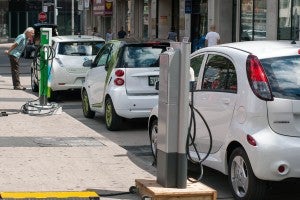 You may have noticed: we’re big fans of electric vehicles (EVs) here at Environmental Defense Fund (EDF). Standard transportation fuels are one of the biggest sources of harmful greenhouse gas emissions, so vehicle electrification is a crucial part of our clean energy future. But getting more EVs on the road is about more than just giving customers incentives to buy these types of vehicles. We also need to deal with where and how we charge EVs.
You may have noticed: we’re big fans of electric vehicles (EVs) here at Environmental Defense Fund (EDF). Standard transportation fuels are one of the biggest sources of harmful greenhouse gas emissions, so vehicle electrification is a crucial part of our clean energy future. But getting more EVs on the road is about more than just giving customers incentives to buy these types of vehicles. We also need to deal with where and how we charge EVs.
From April 27th to May 4th, EDF was engaged in evidentiary hearings at the California Public Utilities Commission that dealt with San Diego Gas & Electric’s (SDG&E) new electric vehicle pilot. Representatives from EDF, the Utility Consumers’ Advocacy Network, the Office of Ratepayer Advocates, SDG&E, Pacific Gas & Electric, ChargePoint, KnGrid, the Natural Resources Defense Council, and the Green Power Institute, were all putting their best foot forward at the hearings. While there were sadly no Perry Mason moments (aside from an unsilenced cell phone playing the theme song in the middle of the hearings), I did try my hand at challenging witnesses on some key points through cross-examination for the first time. More importantly, the six-day-long process allowed Jamie Fine to shine as an expert witness and raise a number of matters of high priority to EDF. Read More


